|
|
|
HEALTHY
EXERCISE PLANS-- WALKING
|
|
Why walk?
|
Walking is one of the easiest ways to be physically active.
You can do it almost anywhere and at any time. Walking is also
inexpensive–all you need is a pair of shoes with sturdy heel support.
Walking may:
- Give you
more energy and make you feel good.
- Reduce stress
and help you relax.
- Tone your
muscles.
- Increase
the number of calories your
body uses.
- Strengthen
your bones and muscles.
- Improve your
stamina and your fitness.
- Lower your
risk of chronic diseases, such as heart disease and type 2 diabetes.
- Give you
an opportunity to socialize actively with friends and family.
For
all of these reasons, people have started walking programs. If
you would like to start your own program, read and follow the
information provided in this pamphlet.
 |
|
Is it okay for me to walk?
|
Answer the following questions before you begin a walking program.
- Has your health care provider told you that you have heart
trouble, diabetes, or asthma?
- When you are physically active, do you have pains in your
chest, neck, shoulder, or arm?
- Do you often feel faint or have dizzy spells?
- Do you feel extremely breathless after you have been physically
active?
- Has your health care provider told you that you have high
blood pressure?
- Has your health care provider told you that you have bone
or joint problems, such as arthritis?
- Are you over 50 years old and not used to doing any moderate
physical activity?
- Are you pregnant?
- Do you smoke?
- Do you have a health problem or physical reason not mentioned
here that might keep you from starting a walking program?
If
you answered yes to any of these questions, please check with
your health care provider before starting a walking program or
other form of physical activity.

|
|
How do I start a walking program?
|
Leave time in your busy schedule to follow a walking
program that will work for you. Keep the following points in mind
as you plan your program:
- Choose a safe place to walk. Find a partner or group of people
to walk with you. Your walking partner(s) should be able to
walk with you on the same schedule and at the same speed.
- Wear shoes with proper arch support, a firm heel, and thick
flexible soles that will cushion your feet and absorb shock.
Before you buy a new pair, be sure to walk in them in the store.
- Wear clothes that will keep you dry and comfortable. Look
for synthetic fabrics that absorb sweat and remove it from your
skin.
- For extra warmth in winter, wear a knit cap. To stay cool
in summer, wear a baseball cap or visor.
- Think of your walk in three parts. Warm up by walking slowly
for 5 minutes. Then, increase your speed and do a fast walk.
Finally, cool down by walking slowly again for 5 minutes.
- Do light stretching after your warm-up and cool-down.
- Try to walk at least three times per week. Each week, add
2 or 3 minutes to your walk. If you walk less than three times
per week, you may need more time to adjust before you increase
the pace or frequency of your walk.
- To avoid stiff or sore muscles and joints, start gradually.
Over several weeks, begin walking faster, going further, and
walking for longer periods of time.
- Set goals and rewards. Examples of goals are participating
in a fun walk or walking continuously for 30 minutes.
- Keep track of your progress with a walking journal or log.
- The more you walk, the better you may feel and the more calories
you may burn.
Experts recommend 30 minutes of moderate-intensity physical
activity on most, if not all, days of the week. If you cannot
do 30 minutes at a time, try walking for shorter amounts and gradually
working up to it.
 |
|
Safety Tips
|
Keep safety in mind when you plan your route and the time of
your walk.
- If you walk at dawn, dusk, or night, wear a reflective vest
or brightly colored clothing.
- Walk in a group when possible.
- Notify your local police station of your group’s walking
time and route.
- Do not wear jewelry.
- Do not wear headphones.
- Be aware of your surroundings.

|
|
How do I stretch?
|
Stretch gently
after you warm up your muscles with an easy 5-minute walk, and
again after you cool down. Try doing the stretches listed below.
Do not bounce or hold your breath when you stretch. Perform slow
movements and stretch only as far as you feel comfortable.
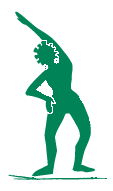 Side Reach Side Reach
Reach one arm over your head and to the side. Keep your hips
steady and your shoulders straight to the side. Hold for 10 seconds
and repeat on the other side.
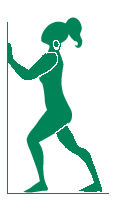
Wall Push
Lean your hands on a wall with your feet about 3 to 4 feet
away from the wall. Bend one knee and point it toward the wall.
Keep your back leg straight with your foot flat and your toes
pointed straight ahead. Hold for 10 seconds and repeat with the
other leg.
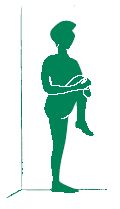 Knee Pull Knee Pull
Lean your back against a wall. Keep your head, hips, and feet
in a straight line. Pull one knee to your chest, hold for 10 seconds,
then repeat with the other leg.
 Leg Curl Leg Curl
Pull your right foot to your buttocks with your right hand.
Stand straight and keep your knee pointing straight to the ground.
Hold for 10 seconds and repeat with your left foot and hand.
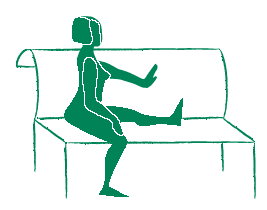 Hamstring Hamstring
Sit on a sturdy bench or hard surface so that your left leg
is stretched out on the bench with your toes pointing up. Keep
your right foot flat on the floor. Straighten your back, and if
you feel a stretch in the back of your thigh, hold for 10 seconds
and repeat with your right leg. [If you do not yet feel a stretch,
lean forward from your hips until you do feel a stretch.]

|
|
Taking the First Step
|
Walking correctly is very important.
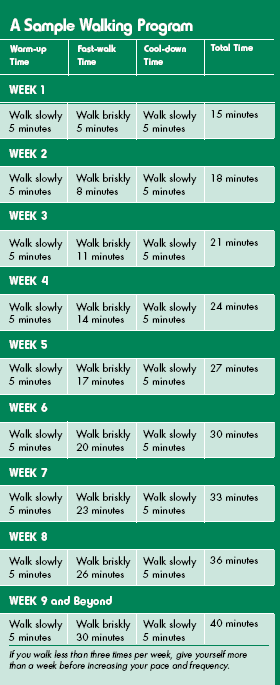
-
Walk with your chin up and your shoulders held slightly back.
-
Walk so that the heel of your foot touches the ground first.
Roll your weight forward.
-
Walk with your toes pointed forward.
- Swing your arms as you walk.
If you walk less than three times per week, give yourself
more than a week before increasing your pac and frequency.
|
| |

Weight-control Information Network
1 Win Way
Bethesda, MD 20892-3665
Phone: (202) 828–1025
Toll-free number: 877–946–4627
FAX: (202) 828–1028
Email: win@info.niddk.nih.gov
Internet: http://www.win.niddk.nih.gov/
The Weight-control Information Network (WIN) is
a service of the National Institute of Diabetes and
Digestive and Kidney Diseases (NIDDK) of the
National Institutes of Health, which is the Federal
Government’s lead agency responsible for biomedical
research on nutrition and obesity.
Publications produced by WIN are reviewed by both
NIDDK scientists and outside experts.
This publication is not copyrighted. WIN encourages
users of this brochure to duplicate and distribute as
many copies as desired.

|
|

